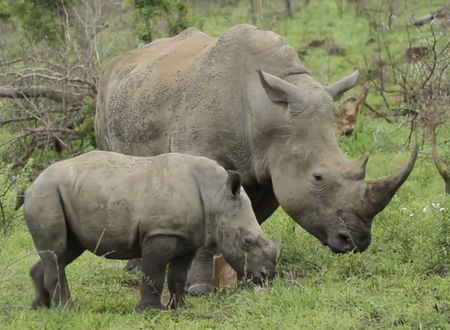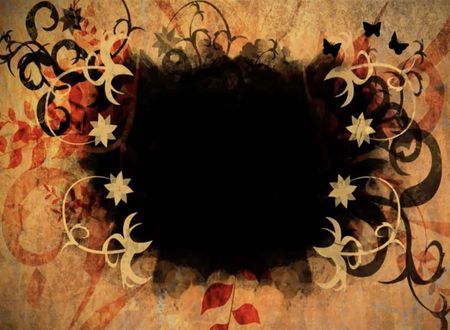As one grows from age bracket of 20s to 30s and if we are alert, we get mildly aware of fear factor creeping upward within albeit a bit slowly and with minimal noise or friction to be truly noticed! As one push towards 40s the slow creep hastens and gnaws as frustration and sometimes worsens to symptoms of depression. The age group mentioned may be changing now yet the symptoms are similar.
As children, most of us were fearful of darkness. As adults, we learnt reasoning with ourselves and began to fear the dark a little lesser. Indeed, we even began having thoughts like “we dont fear the dark anymore”.
As a trekking leader, I have taken several adults out on overnight treks. I have seen that the particular human trait of a “nameless fear” repeating again and again with different groups of people. People usually remain cheerful even when the darkness falls on the secluded spot atop a hill where after sunset, the only light available is that of your torch and the candles that you burn. Yet once the dark evening has set in, scratch underneath each person’s cheerfulness a little and one finds that fear is lurking inside. How do I notice this- do I knowingly make them walk out in the dark alone? No- I reason that the fear lurks internally for most people because it usually starts with one member exposing his fear unwittingly and then the spread happens automatically till counter-measures are taken. The fear is always of the dark and the unknown. While growing up, we just learnt to manage our deep fears a little. Unfortunately, a situation like wilderness what a trek offers often exposes our chinks and poor training. A member starts narrating a ghost story as an unwitting nervous reaction to the fear during the dark trek evenings and soon all the members get uptight unless the leader chooses to intervene and steer the topic to other areas. Leaders usually ensure that walking out for small errands like collecting water or cleaning utensils or for nature calls are always done in pair to manage fears and strained nerves.
Now this fear observed in treks is primal in nature. Due to our being in wilderness, We are more susceptible to the elements of nature and as our surrounding is totally new and dark, it makes us edgy. The only antidote is staying as close physically as possible to the small source of light (our torch and candles) and the security that a crowd and the shelter offers (In the Sahyadri mountain ranges, shelter is usually a cave or an ancient temple structure).
Contrastingly, the fear that creeps on us while leading a hustling and bustling city life, is a different kind of fear. Here we are in an environment that has lots of artifical light to take away the physical darkness. There is a lot of known around in the physical realm. So what is this fear all about then?
Let us try to recall out childhood days and how we started getting rid of our fear of darkness! Our parents would gently coax us to open our eyes or walk and explore the place that we got frightened of and help us learn to be not afraid. The method used was of turning on the lights, making us explore the erstwhile dark place under their protection and a “reasoning” with our open little mind as to why there is nothing out there to be afraid of. Our childhood is replete with similar incidences where such “reasoning” was combined with throwing of light on a “dark place” allowed for negation of fear of dark. However, the protected guidance aspect was not always available instead being replaced with our training on the ability of “reasoning”.
As we grew up our education system also helped us develop this inner faculty of reasoning to drive away all fears within. Little wonder we became more logical and “reason” focused. Yet all this training of our faculty of “reason” could not help us to mitigate the growing fear as we started aging. Indeed, even as reason was able to throw light on the cause of fear and the foolishness of fear, most of us still continued to get immobilized or unable to get rid of the fear. Something was missing!
While we may have found our ways and means to overcome fears and improve ourselves, it has been sporadic with mix of both success and failures. And when we failed, we often were left wondering why we were unable to overcome fear even with the best of reasoning. Indeed, for the individual who had more failures and less success, it often led to frustration and sometimes even worse – either depression or frequent bouts of panic attacks.
It is recently that I realized what was the ingredient that caused success and failure and that is what I wish to share here. The human mind has 2 faculties that are often used. Reason is one the other faculty is imagination. As were growing, our family, our society and education system helped us develop the reasoning ability quiet well, but alas – the same alacrity was not available to train the other often used mind faculty “imagination”. The reasoning mind does the work of identifying and calculating the variables, analyzing the pros and cons, comparing and helps a person arrive at a decision as to what could be a good action path for success.
Yet and strangely, the motivation for action does not come from a reasoning mind. It is the imaginative mind that motivates action.
The “imaginating mind” is all about getting the feel and when the feeling is strong, action follows. Just try getting one’s reasoning mind to recall all past incidences of success or failures and identify the images that went through the mind before an action took place once the logical reasoning mind brought in a decision, one will be surprised that it was a combination of the decision chosen by reasoning combined with the imaginative feel of the mind for that action that did the work. If one is honest with one-self, one will agree that every-time a failure was registered, the imaginative mind was in conflict with the reasoning mind.
Let us transport ourselves back to the childhood days. When our parent made us act and “explore the place of fear”, our imaginative mind was ready to accept the idea. We had a strange faith in the strength of our parents. Let us recall a situation where we try to coax a child to let go of his fear and explore something new. Usually this effort fails only when the imagination of child is still contrary and not convinced with images being projected by the elder’s statements using reasoning. Ultimately it is the faculty of imagination that brings about action!
Now, this is a very important clue! Unlike the reasoning mind that was well trained by the world at large, the imaginating mind is not trained as a child. It is usually allowed to get auto-trained by what it sees around. This is where it all goes down the drain. The child registers images that is not in line with what is verbally or logically explained by reason. For eg: A parent asking the child to let go of fear may himself or herself be acting out with a fear bias in several life situations. This non-verbal images get registered unwittingly by the child and forms the root of his or her life actions. While it is trained in reason to be letting go of fear, or explore, the imaginative mind is registering fear and learning to fear many life situations. This creates a strong barrier for exploratory actions that can help negate the fear. For Eg: the child may logically reasoning all the necessity for him to study hard for exams, yet the imaginative mind could be creating fear of exams due to the various images it has already registered. This can cause the inability of the child to concentrate well and then thus result in actually failing (or getting less than expectation) which in-turn increases the grip of fearful images. Unlike the primal fear in treks that is of physical kind (Note- it can be mental as well for some people in treks), this fear is more mental and is attributed to psychological warps of the mind. The various construct of imaginative mind causing fear could range from seeing oneself as “I will become 2nd ranker in class to “Ohh – I will be labelled as failure by the class and be laughed at”.
We are no more a child now. Can we train our imaginative mind now at-least? Yes indeed, the reasoning mind asserts! The difficulty level may look daunting or more now, yet it takes nothing more than the right kind of images to take seed. This means we have to just take responsibility for planting the right images in our head. Every-time the mind flashes an image of fear, we must begin with the practice of having counter-images of the right kind. While the feel may not be right with the counter-images in the beginning (due to lack of training), with continued efforts, it is doable.
That is the reason why most of the wise mention that when you make an affirmation -do it with feeling. It is only then that the affirmation has the backing of imagination. This is when success starts happening more than failures and and fear starts receding. When fear recedes, frustrations are bound to become thing of the past and depression or panic attacks can completely vanish. Frustrations usually happens due to continued failures while depressions or panic attacks are the result of an over-imaginative and negative mindset that only keeps looking at images of doom and gloom.
We have to begin to understand and feel that “Our actions follow the images I bring forth. Hence I will bring only those images that are loving or peaceful. I will strive to restrict myself from being in situations that draw a negative or discouraging picture in the head and if unavoidable, I will protect myself by learning to either block those images or learning to create counter images that are loving, or more positive or hopeful about future”









Comments & Discussion
0 COMMENTS
Please login to read members' comments and participate in the discussion.